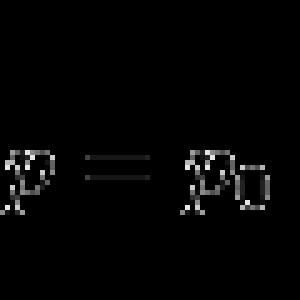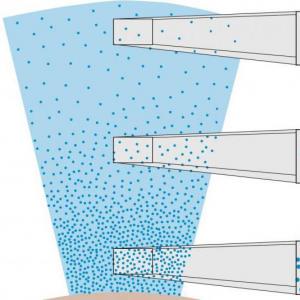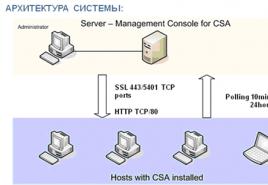VMA on clinical. Military Medical Academy
Them. CM. Kirov has existed for more than 200 years, and all this time it produces highly qualified specialists in the field of medicine, who save human lives every day around the world. Many of the graduates of the university are rightfully considered the leading physicians of our time.
History
The official date of foundation of the academy is the end of December 1798, it was then that Emperor Paul I signed a decree on the establishment of medical schools at existing hospitals. Then she wore the status of a school, however, it was not for long. Beginning in 1808, the university was named the Imperial Medical and Surgical Academy.
Military-medical Academy named after S.M. Kirov at one time influenced the development of pharmaceutical and veterinary education, it is there that you can find the originals of the first medical textbooks, which are considered the fundamental basis of modern medicine. In the period from 1808 to 1904, the academy was actively developing, with the help of the holders of the throne, as well as titled advisers and officials.
At the beginning of the 20th century, there was a split, some of the teachers did not support the new government and went to work abroad. All those who remained helped the new government to build relationships with the people and provided assistance to the wounded as a result of civil war. In the early 20s of the XX century, the military medical academy. CM. Kirova focused on the development and further teaching of special military-type disciplines.
Over the entire history of the academy's existence, about 300 of its graduates have become outstanding scientists in various fields of science, for which the university was awarded the title of an institution of world significance. In 1998, the academy became one of the most valuable objects of the cultural heritage of all the peoples of the Russian Federation.
Military Medical Academy named after S.M. Kirov: what to do?
For admission, the applicant will need to provide a standard package of documents: a copy of the passport, a copy of the school certificate or other document indicating the presence higher education, certificates of passing the Unified State Exam, two 3x4 photographs, and also fill out an application in the form established by the university.

Citizens of the Russian Federation aged 16 to 22 can become students, provided that they have not passed military service. If, nevertheless, they served, then the age bar increases to 24 years. If we are talking about military personnel who serve under the contract, they can enter the academy up to 25 years. If the applicant enters to receive a secondary vocational education, his age must be less than 30 years.
passing scores
Them. Kirov, which changes annually, offers applicants who did not pass the Unified State Exam for one reason or another to pass it upon admission. For each specialty, there are certain thresholds in points that must be overcome by the applicant to participate in the competition.
In total, there are four specialties in the academy: "Medicine", "Medical and preventive care", "Pharmacy" and "Dentistry". To pass to the first specialty, it is necessary to score 55 points on the Unified State Examination in chemistry, 50 points in the Russian language and biology.
For successful passage to the specialty "Dentistry" it is necessary to score 50 points in all three subjects. In the specialty "Pharmacy" you need to score 45 points in chemistry and 40 in Russian language and biology. For admission to the specialty "Medical and preventive work", it is enough to score 40 points in all three subjects.
Help for newbies

Military Medical Academy. Kirov, where assistance to applicants is constantly provided, invites everyone to pass training courses. It is there that you can improve your own knowledge of the Russian language, chemistry and biology - those subjects that must be taken for the exam for admission.
There are several methods and preparatory programs that can be used to study at the academy. Education is paid, the detailed cost and schedule of classes can be found in admission committee university, which operates from May to August. Among other things, you can ask for help from the university students themselves, they will be happy to tell you all the nuances necessary for admission and help you cope with the solution of all pressing issues.
Reviews about the university

Military Medical Academy. Kirov, reviews of which even leave foreign students and guests, is a real field for experimentation, which can be used by those who are eager to improve their own knowledge, skills and abilities. That is why students from other countries often come here, wanting to get a quality medical education.
All students and graduates speak positively about the educational institution that gave them their favorite profession. Most of the graduates work in their specialty, some of them are engaged in private practice. Quite often, graduates come to the university for advice from their former teachers, and they never refuse them.
University structure
If we talk about the structure of the university, then the military medical academy. CM. Kirov has grown greatly over its more than 200-year history. As of 2015, there are 7 faculties, more than 40 secondary vocational education, two medical college, own reception area.

In addition, the university has many laboratories where clinical research is carried out, an experimental clinic, a pharmaceutical center, a military medicine research institute, a consultative center, a dental clinic, and a large number of other medical institutions, each of which is open to students and patients around the clock.
Reception of patients
Military Medical Academy. Kirova is engaged not only in teaching students, but also in providing free help preferential contingents of the Ministry of Defense of the Russian Federation, as well as other citizens of the Russian Federation, whose right to this service is guaranteed by federal law, are entitled.

In the event that a patient enters the academy for urgent indications, he will be provided with medical assistance within the framework of compulsory medical insurance. All other categories of citizens have the right to use medical care on a general basis and within the framework of VHI. In this case, the provision of medical services will be carried out for a fee, according to the existing price list, which can be found in the admission department of the university.
Scientific work
CM. Kirova constantly leads scientific activity, which for many years has remained the highest level. More than 80 graduates and employees of the university have the proud title of "Honored Scientist of the Russian Federation", two became members of the Russian Academy of Sciences, and 28 - of the Russian Academy of Medical Sciences. All this became possible thanks to numerous studies and experiments aimed at improving the medical industry.

Teaching staff, which has a military medical academy. Kirov in St. Petersburg, includes the highest degree professionals in their field. In total, the university employs more than 250 professors, 450 associate professors, 430 doctors and more than 1200 candidates of sciences, who work together to support the work scientific schools engaged in the study of leading areas of modern medicine.
Extracurricular activities
In addition to active scientific and educational activities university students have time to take part in the extracurricular life of the university. Military Medical Academy. Kirov has repeatedly become the winner of city and all-Russian student springs, the winner of regional KVN competitions and a participant in various entertainment events.
Every university student can count on help from the local trade union organization. Military Medical Academy. Kirov, whose photo is reminiscent of the former greatness Tsarist Russia, periodically conducts excursions for all comers. Students actively participate in these excursions, trying to learn as much as possible about their university.
The trade union committee also periodically offers students a job in existing medical institutions in the region, which can be combined with studies. Since learning is the main responsibility of a student, the trade union committee strictly ensures that work does not interfere with learning and, if necessary, helps students.
The history of the Military Medical Academy named after S. M. Kirov has more than 200 years. For more than two centuries, thousands of highly qualified specialists have graduated from the walls of the university, saving a huge number of human lives. Many graduates have become outstanding doctors and scientists in the field of modern medicine.
The building of the Military Medical Academy. CM. Kirov (date of formation December 29, 1798)History
The Military Medical Academy was established on December 18, 1798 by decree of Emperor Paul I. Then it was the Medical and Surgical School for the training of medical personnel, later the school was renamed the Academy, and under Emperor Alexander I in 1808 the Academy became Imperial.
In addition to medical education, the history of higher veterinary and pharmaceutical education in Russia began from the Academy. It was the first scientific, educational and medical center in the history of the country, the first medical manuals and textbooks began to be published here, the academy became the forge of professors of medical sciences for various universities.
From 1808 to 1838, the head of the medical academy was J. V. Willie, an outstanding physician, originally from Scotland. He made an invaluable contribution to the development of military medicine in Russia and devoted more than 50 years to the position of chief inspector of medicine in the emperor's army. It was in the military academy in the period from 1841 to 1856 that the outstanding surgeon N. I. Pirogov worked, who became the founder of a new era in practical medicine and education. In the golden age of the educational institution, great doctors worked within the walls of the academy, such as I. P. Pavlov, V. M. Bekhterev, N. S. Korotkov, S. P. Botkin, I. M. Sechenov, N. N. Zinin and other.

After the defeat in Crimean War in the period from 1853 to 1856, the tsarist government decides to rename the academy into the Military Medical Academy - Vmed, this happened in 1881. Under the new rules educational process The educational institution became more militarized, from that moment the academy was engaged in the training of doctors and surgeons for the military and naval departments. Veterinary medicine and pharmaceuticals were excluded from the structure of the academy. The doctors of the academy made many medical discoveries and inventions during the First World War and during the Russo-Japanese War.
After the revolution of 1917, a large part of the teaching staff of the academy left the country, but there were also those who supported the power of the Soviets, among them I.P. Pavlov, the head of the academy V.N. Tonkov, S.P. Fedorov and others. The doctors of the educational institution assisted the wounded at the front during the war with the White Guard, continued to teach at the departments and conducted medical practice in the hungry post-revolutionary years in conditions of complete devastation.
After the 20th year of the last century, the educational process at the Academy began to focus mainly on special military medical disciplines, for example, military hygiene courses, organizational and tactical disciplines.

During the Great Patriotic War more than 1800 military doctors were released, many of whom died on the fronts. At the beginning of the war, many teachers and professors of the academy headed the medical services and units on the front line. In 1941, the academy was relocated from Leningrad to Samarkand and returned to its permanent location only in 1944 after the blockade was lifted.
In 1954, for merits in the training of military medical personnel and the development of medicine, the Academy was awarded the Order of Lenin, and in 1968, in honor of the 50th anniversary of the USSR Armed Forces educational institution awarded the Order of the Red Banner. Professors and lecturers of the academy, as well as hundreds of graduates, made a great contribution to the organization of medical support during the years of the armed conflict in Afghanistan. Medical officers from among the graduates of the academy participated in military conflicts in Vietnam, Korea, Serbia and other countries.

25 out of 112 buildings of the Military Medical Academy are included in the list of historical and cultural heritage by decision of UNESCO and are under state protection. Also on the territory educational institution many monuments of famous sculptors. Since December 17, 1998, by decree of the President of Russia, the Military Medical Academy named after S. M. Kirov has been part of the valuable objects of the cultural heritage of peoples Russian Federation.
 Classes of cadets at the Military Medical Academy
Classes of cadets at the Military Medical Academy Structure
The university consists of 8 main faculties:
- Leading medical team.
- Training of doctors for Missile and ground forces.
- Training of doctors for the Air Force.
- Training of doctors for the Navy.
- Training of military medical specialists for foreign states.
- Additional professional education.
- Training and improvement of civilian medical and pharmaceutical specialists.
- Secondary vocational education.
Academy departments:
- Social Sciences.
- Pedagogy.
- Operational-tactical training.
- Organization and tactics of medical service.
- Public health and the economics of military health care.
- Organization of tactics of the medical service of the fleet.
- Automation of medical service management with military medical statistics.
- Chemistry.
- Clinical biochemistry and laboratory diagnostics.
- Biological and medical physics.
- normal anatomy.
- normal physiology.
- Military psychophysiology.
- Pathological anatomy.
- pathological physiology.
- Biology.
- Histology with a course of embryology.
- Microbiology.
- Operative surgery with topographic anatomy.
- Pharmacology.
- Radiology and radiology with a course of ultrasound diagnostics.
- Forensic medicine (mortuary).
- Military toxicology and medical protection.
- General and military hygiene with a course in naval and radiation hygiene.
- General and military epidemiology.
- Aviation and space medicine.
- Physiology of diving.
- Military medical supply and pharmacy.
- General surgery.
- Faculty Surgery.
- Hospital surgery.
- Naval surgery.
- Military field surgery.
- Improving the surgery of doctors.
- Neurosurgery.
- Military traumatology and orthopedics.
- Thermal damage.
- Urology.
- Otolaryngology.
- Ophthalmology.
- Maxillofacial and dental surgery.
- Therapeutic dentistry.
- Obstetrics and gynecology.
- Anesthesiology and resuscitation.
- Propaedeutics of internal diseases.
- Hospital therapy.
- Balneology and physiotherapy.
- Faculty Therapy.
- Naval Therapy.
- Military field therapy.
- Improving the therapy of doctors.
- Nervous diseases.
- Psychiatry.
- Skin and venereal diseases.
- infectious diseases.
- Phthisiology.
- Childhood diseases.
- Outpatient care.
- Russian language.
- Foreign languages.
- Physical training.
- Nephrology and efferent therapy.
 Visit of the President of the Russian Federation V. Putin to the clinic of the Military Medical Academy
Visit of the President of the Russian Federation V. Putin to the clinic of the Military Medical Academy In addition, the Academy has two own admission departments, a pathoanatomical laboratory, a research center, and a scientific company. It also includes a dental clinic, a diagnostic center, an experimental clinic, a blood and tissue center, a sanitary and epidemiological laboratory, and even a military band.

Educational and material base
The educational and material base includes the following objects:
- Educational laboratories. Designed for practicing practical skills, conducting experiments and experiments.
- Study rooms. Theoretical classes are held here, teaching aids, also classrooms are used to train young teachers.
- Simulation and simulation center. It has been working in test mode since September 1, 2014, it allows using various models for improving the level of skills and consolidating the acquired knowledge with the help of special simulation models and equipment.
- Base for the educational process. Located in Krasnoye Selo, here cadets are trained in conditions as close as possible to combat. Tactical exercises are regularly held at the base to consolidate the acquired practical skills in the field. In addition, the possibilities of machinery and equipment are being dismantled here, there are specialized training rooms.
- Library. Works since the founding of the academy.
- Places and facilities for physical training.

Admission conditions
Citizens of the Russian Federation who do not have health restrictions, who have received secondary full or secondary vocational education, are considered as candidates for admission. These citizens include:
- persons from 16 to 22 years old who did not serve in the ranks of the RF Armed Forces;
- persons under 24 years of age who have served or are undergoing military service;
- persons under 27 years of age serving under a contract, with the exception of officers (for secondary vocational education, the maximum age is 30 years).

The following categories of citizens are not considered as candidates for admission to the Military Medical Academy:
- convicted by the decision of the judiciary with a sentence;
- under investigation;
- serving a prison sentence;
- with an outstanding conviction;
- deprived of the right to occupy military positions for a certain period of time and in other cases provided for by the legislation of the Russian Federation.
Preliminary selection of candidates is carried out by military commissariats at the place of registration, heads of military schools or commanders of military units. At the stage of preliminary selection, activities are carried out for admission to the entrance examinations of citizens who meet the requirements for admission to the academy;
- citizenship of the Russian Federation;
- compliance with the level of education and age;
- fitness for health reasons and physical training;
- suitability in the category of professional suitability.
For those who did not serve or served in the ranks of the Armed Forces of the Russian Federation, it is required to submit an application about the desire to enter the academy at the military commissariat at the place of residence. Servicemen submit a report addressed to the commander of the unit (cadets cadet corps and schools in the name of the head of the school). The following package of documents should be attached to the application:
- copies of documents confirming identity and citizenship;
- copies of birth certificates and documents confirming the level of education;
- autobiography;
- characteristics from the place of study, service or work;
- three photographs;
- for military personnel, an additional service card.
 The competition in the VMA among female applicants is much higher than that of boys
The competition in the VMA among female applicants is much higher than that of boys If a candidate for one reason or another did not pass the exam, he can pass it upon admission to the academy. For each chosen specialty, there is a certain passing score. To improve your knowledge before the entrance examinations, you can attend paid preparatory courses. More detailed information about passing scores and other parameters important for admission can be found in the Admissions Committee, which operates annually from May to August.







